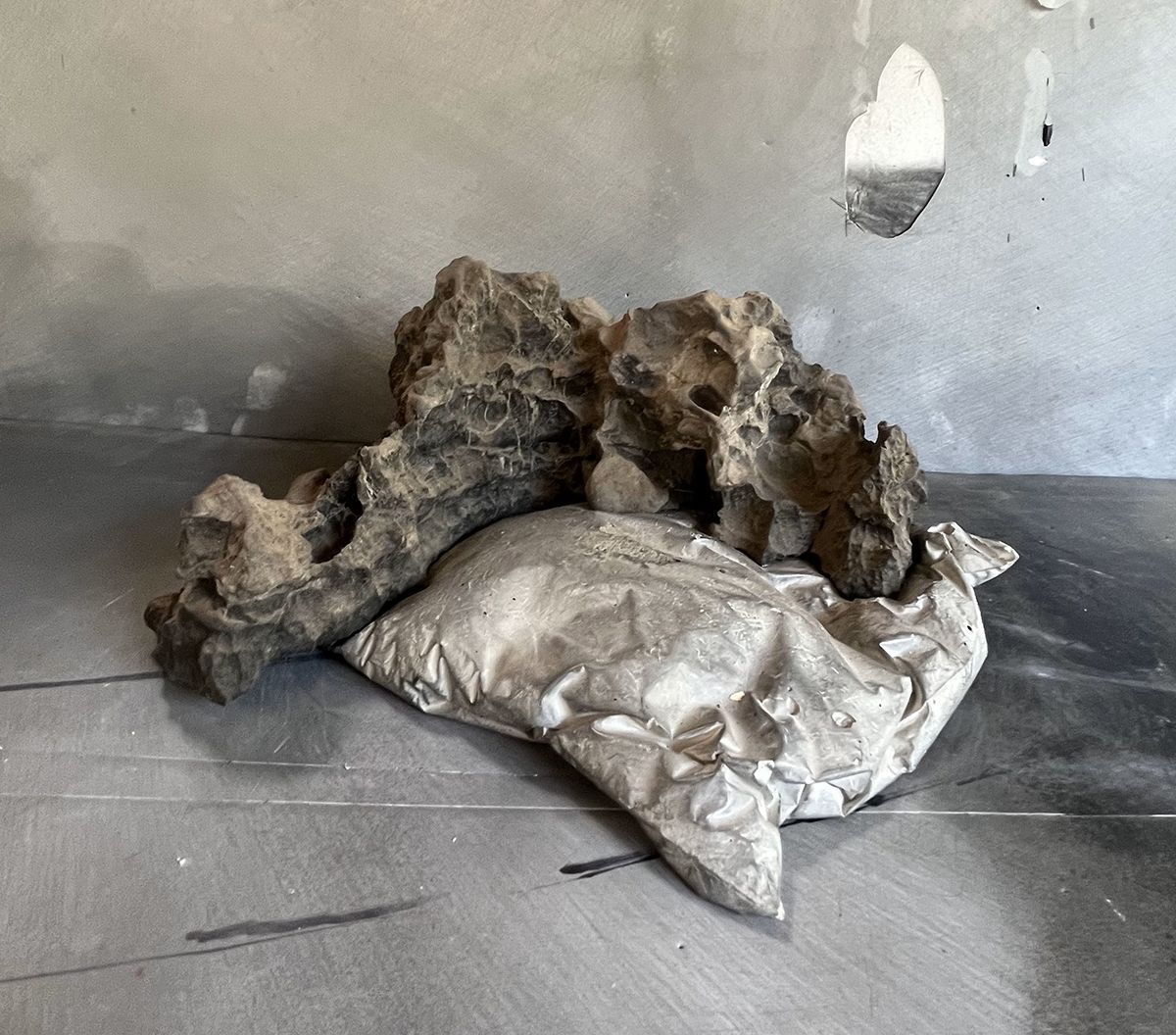
“Untitled”
By Richard Turner
We typically display our stones so that their intrinsic beauty evokes the beauty of the larger natural world. We are all familiar with a single stone evoking an entire range of mountains in our mind’s eye. Viewing stones can also be used in displays that confront us with the fragility of the natural world and our careless disregard for its well-being.
The display of this stone was inspired by the Pacific trash vortex in the North Pacific Ocean. Covering 620,000 square miles with a collection of plastic and floating trash, The Great Pacific Garbage Patch, as it is also called, is an accumulation of debris from the nations of the Pacific Rim, including North and South America and countries in Asia.
The stone rests uncomfortably on a base made by pouring liquid plaster into a plastic bag and letting it set with the weight of the stone holding it in place. The seams and corners and the smooth-but-wrinkled surface of the form are all too familiar. We see bags like this every day in our refrigerators and trash cans. Paired with the stone, however, the ubiquitous baggie becomes high surf surging into a rocky cove on the coastline of one of the countries of the Pacific Rim. The plastic ocean crashing against the rugged shoreline unsettles the land itself just as it may unnerve us as we acknowledge our role in polluting the seas with plastic lighters, toothbrushes, water bottles, pens, baby bottles, cell phones, and plastic bags.

